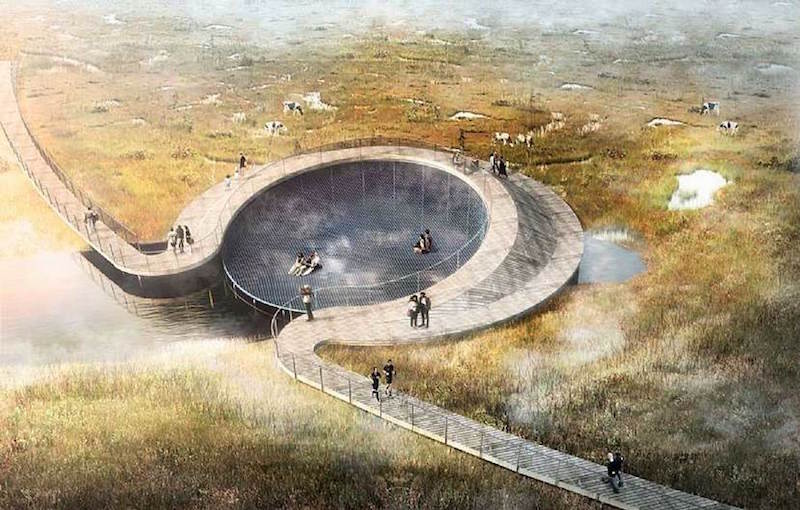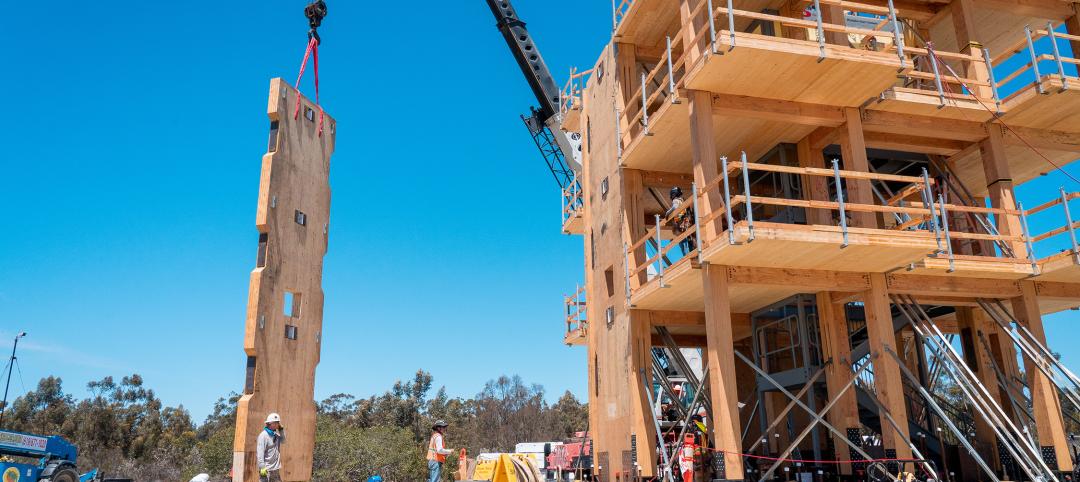C.F. Møller recently won a competition to design a new climate project near Randers, Denmark. Storkeengen, or Stork Meadow, is a new landscape project that creates cloudburst and storm flood protection, strengthens urban nature, and brings the town of Vorup, a suburb of Randers, even closer to the Gudenå River.
The project’s main goal is to resolve the city’s current and future climate challenges by converting Stork Meadow into a public nature park that brings the natural delta along the Gudenå River closer to the center of Randers and its residents. The project’s technical climate protection solutions are based on strengthening the nature value and functionality of the wetland meadow. New cloudburst routes through Vorup lead rainwater from roofs, parking lots, and roads to Stork Meadow.
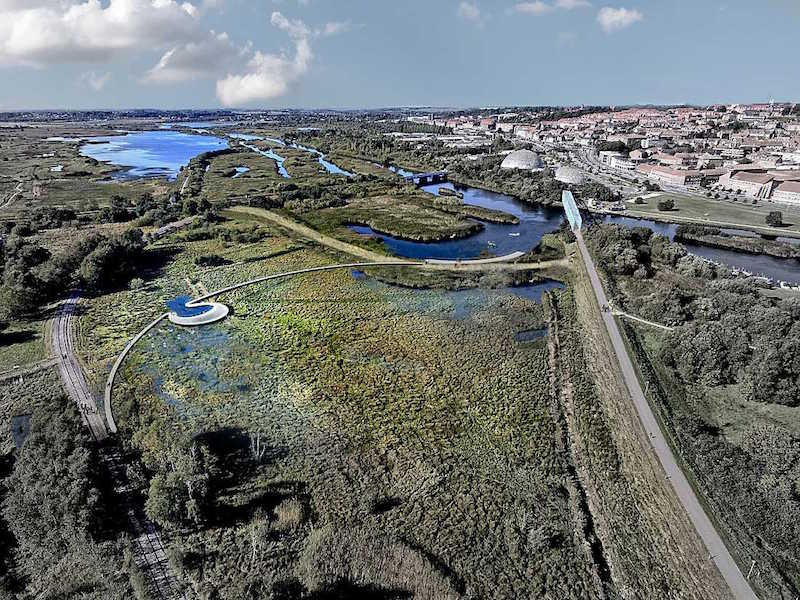 Rendering courtesy of C.F. Møller.
Rendering courtesy of C.F. Møller.
The water is then filtered in purification basins designed as natural wetland meadow areas before being deposited into the Gudenå River. A new dyke between Stork Meadow and the Gudenå will ensure good purification and also protect the low-lying parts of Vorup from flooding. Additionally, the dyke will create new pathways between the center of Randers and the nature areas to the west.
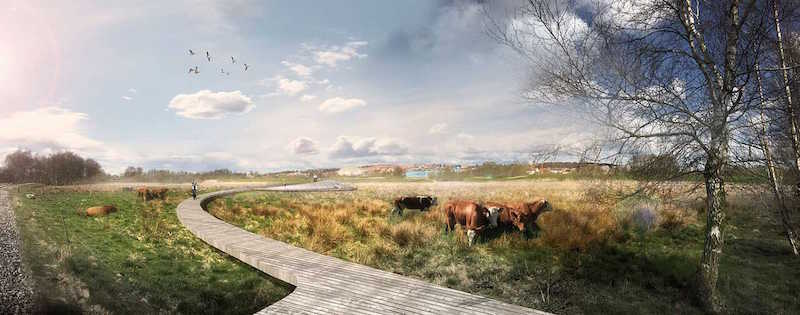 Rendering courtesy of C.F. Møller.
Rendering courtesy of C.F. Møller.
In an effort to enhance the nature experience, activity plateaus will be created to allow people to experience the wet meadow’s habitat up close. These plateaus make it possible to get close to the area’s grazing cattle, enjoy the sunset, or navigate the Gudenå by canoe. Signage with nature information will also be included throughout the project site.
The project will begin construction in fall 2018 and is slated for completion by 2021. C.F. Møller is working with Randers Vandmiljø, Randers Municipality, and Orbicon on the project.
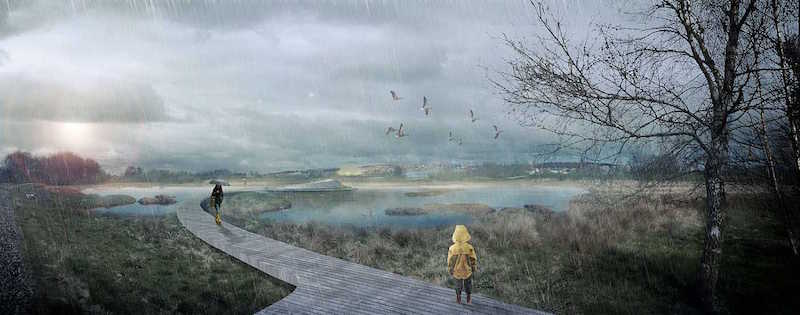 Rendering courtesy of C.F. Møller.
Rendering courtesy of C.F. Møller.
Related Stories
Engineers | Jun 5, 2023
How to properly assess structural wind damage
Properly assessing wind damage can identify vulnerabilities in a building's design or construction, which could lead to future damage or loss, writes Matt Wagner, SE, Principal and Managing Director with Walter P Moore.
Energy-Efficient Design | Jun 5, 2023
Implementing an ‘asset drawdown strategy’ for site decarbonization
Solidifying a decarbonization plan via an “asset drawdown strategy” that carefully considers both capital and operating costs represents a game-changing opportunity for existing properties to compete with new projects.
Cladding and Facade Systems | Jun 5, 2023
27 important questions about façade leakage
Walter P Moore’s Darek Brandt discusses the key questions building owners and property managers should be asking to determine the health of their building's façade.
Mass Timber | Jun 2, 2023
First-of-its-kind shake test concludes mass timber’s seismic resilience
Last month, a 10-story mass timber structure underwent a seismic shake test on the largest shake table in the world.
3D Printing | May 12, 2023
World’s first 3D-printed medical center completed
3D construction printing reached new heights this week as the world’s first 3D-printed medical center was completed in Thailand.
Sustainability | May 11, 2023
Let's build toward a circular economy
Eric Corey Freed, Director of Sustainability, CannonDesign, discusses the values of well-designed, regenerative buildings.
Resiliency | Apr 18, 2023
AI-simulated hurricanes could aid in designing more resilient buildings
Researchers at the National Institute of Standards and Technology (NIST) have devised a new method of digitally simulating hurricanes in an effort to create more resilient buildings. A recent study asserts that the simulations can accurately represent the trajectory and wind speeds of a collection of actual storms.
Urban Planning | Apr 12, 2023
Watch: Trends in urban design for 2023, with James Corner Field Operations
Isabel Castilla, a Principal Designer with the landscape architecture firm James Corner Field Operations, discusses recent changes in clients' priorities about urban design, with a focus on her firm's recent projects.
Sustainability | Apr 10, 2023
4 ways designers can help chief heat officers reduce climate change risks
Eric Corey Freed, Director of Sustainability, CannonDesign, shares how established designers and recently-emerged chief heat officers (CHO) can collaborate on solutions for alleviating climate change risks.
Cladding and Facade Systems | Apr 5, 2023
Façade innovation: University of Stuttgart tests a ‘saturated building skin’ for lessening heat islands
HydroSKIN is a façade made with textiles that stores rainwater and uses it later to cool hot building exteriors. The façade innovation consists of an external, multilayered 3D textile that acts as a water collector and evaporator.


